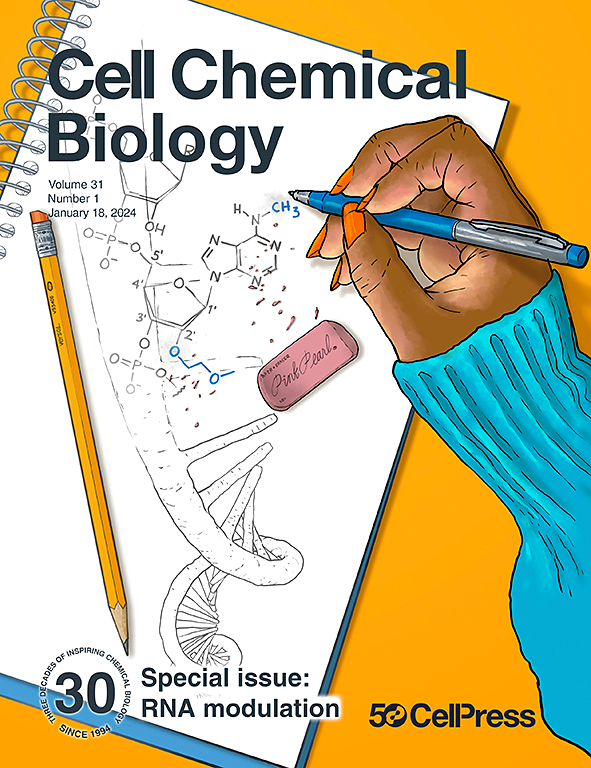动力:线粒体NADPH促进氧化代谢
IF 7.2
1区 生物学
Q1 BIOCHEMISTRY & MOLECULAR BIOLOGY
引用次数: 0
摘要
线粒体NADPH丰富,但原因尚不清楚。在Nature Cell Biology发表的一项研究中,Kim等人1通过对线粒体脂肪酸合成(mtFAS)产物的直接量化,发现了nadk2衍生的线粒体NADPH在线粒体脂肪酸合成(mtFAS)中的重要作用。这项工作为了解NADK2、线粒体NADPH和mtFAS如何调节线粒体功能打开了大门。本文章由计算机程序翻译,如有差异,请以英文原文为准。
Powering the powerhouse: Mitochondrial NADPH propels oxidative metabolism
Mitochondrial NADPH is abundant, but the reason why was uncertain. In a study published in Nature Cell Biology, Kim et al.1 identified an important role of NADK2-derived mitochondrial NADPH in mitochondrial fatty acid synthesis (mtFAS) through direct quantification of the products built by mtFAS. This work opens the door to understanding how NADK2, mitochondrial NADPH, and mtFAS regulate mitochondrial function.
求助全文
通过发布文献求助,成功后即可免费获取论文全文。
去求助
来源期刊

Cell Chemical Biology
Biochemistry, Genetics and Molecular Biology-Molecular Medicine
CiteScore
14.70
自引率
2.30%
发文量
143
期刊介绍:
Cell Chemical Biology, a Cell Press journal established in 1994 as Chemistry & Biology, focuses on publishing crucial advances in chemical biology research with broad appeal to our diverse community, spanning basic scientists to clinicians. Pioneering investigations at the chemistry-biology interface, the journal fosters collaboration between these disciplines. We encourage submissions providing significant conceptual advancements of broad interest across chemical, biological, clinical, and related fields. Particularly sought are articles utilizing chemical tools to perturb, visualize, and measure biological systems, offering unique insights into molecular mechanisms, disease biology, and therapeutics.
 求助内容:
求助内容: 应助结果提醒方式:
应助结果提醒方式:


